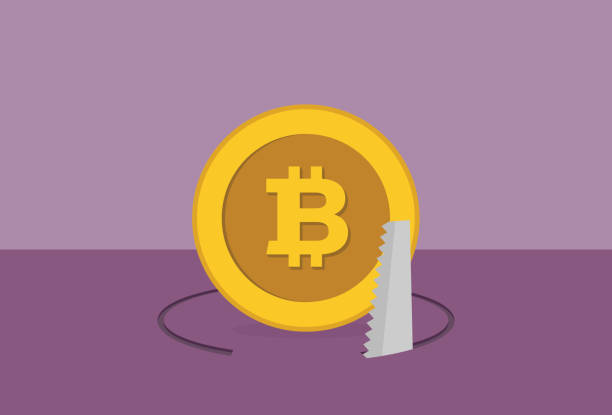The Biggest Cryptocurrency and DeFi Breaches

Cryptocurrencies and Decentralized Finance (DeFi) platforms have gained immense popularity recently, offering innovative financial solutions and investment opportunities. However, the growing adoption of these digital assets has also attracted the attention of malicious actors seeking to exploit vulnerabilities in the ecosystem. Cryptocurrency and DeFi breaches pose significant risks to investors and users, resulting in substantial financial losses.
In this article, we will explore the nature of these breaches and provide real-life examples. Furthermore, we’ll highlight the best practices to protect yourself from crypto hacks and scams.
Largest Crypto and DeFi Hacks – The Summary
Our short guide also provides valuable insight on cryptocurrency and DeFi breaches.
- Cryptocurrency and DeFi platforms have attracted malicious actors seeking to exploit vulnerabilities, leading to substantial financial losses.
- The Ronin Network suffered a significant hack resulting in the loss of $615 million. Meanwhile, the Poly Network fell victim to a $610 million DeFi hack but saw the hacker return most of the funds.
- Mt. Gox, once the largest Bitcoin exchange, lost hundreds of thousands of Bitcoins due to security breaches and filed for bankruptcy.
- FTX, a cryptocurrency exchange, faced bankruptcy and allegations of stealing billions from customers.
- Best practices to protect against crypto and DeFi breaches include using secure wallets, enabling two-factor authentication, verifying URLs and websites, being cautious of phishing attacks, researching DeFi projects, and keeping software and devices updated.
Understanding Cryptocurrency and DeFi Breaches
Cryptocurrency breaches refer to unauthorized access to digital wallets, exchanges, or platforms, leading to the theft of funds or sensitive user information. Attackers exploit weaknesses in security protocols, social engineering, or vulnerabilities in the underlying technology to gain access to crypto assets.
Meanwhile, DeFi breaches involve exploiting vulnerabilities in decentralized finance protocols and applications. DeFi platforms are blockchain-based. Consequently, attacks can lead to the loss of funds due to smart contract bugs, flash loan attacks, or vulnerabilities in liquidity pools.
Real-life Examples of Cryptocurrency and DeFi Breaches
Threat actors are lurking to exploit system vulnerabilities and steal user funds or data. Here are some real-life examples of the largest cryptocurrency and DeFi breaches that have occurred in the past.
The Ronin Network
The Ronin Network, an integral part of the blockchain game Axie Infinity, recently suffered a significant breach perpetrated by hackers. The attack resulted in a staggering loss of 173,600 Ethereum and $25.5 million in stablecoins, amounting to a massive haul of nearly $615 million in stolen funds.
Hackers exploited a vulnerability in the Ronin Network’s security system to access private keys. Then, they used them to forge fraudulent withdrawals. As a result, the attackers successfully stole a substantial amount of Ethereum and other assets.
Moreover, the hackers’ wallet had links with Binance, the largest cryptocurrency exchange. But even after the platform offered assistance and recovered $5.8 million of the stolen funds, the theft remains the largest crypto breach on record.
Poly Network
Poly Network, a cross-chain interoperability protocol, fell victim to one of the world’s largest DeFi hacks in 2021. The attackers exploited a vulnerability in the protocol’s code, making off with approximately $610 million worth of various cryptocurrencies.
However, what sets this heist apart is the hacker’s unexpected behavior. Instead of fleeing with the stolen funds, the hacker communicated with Poly Network and expressed his intention to return the assets he stole. Remarkably, he did just that, leaving only $33 million of tether (USDT) frozen by its issuers.
Yet, there was another twist in this strange tale. Over $200 million remained in an account that required both Poly Network’s and the hacker’s passwords. The hacker held onto their password, stating they would only release it when “everyone is ready.”
Poly Network negotiated with the hacker, whom they dubbed “Mr. White Hat.” They offered a $500,000 bounty as a reward for identifying the vulnerability in their systems and even extended an employment offer as “chief security advisor.”
Finally, after much anticipation, the hacker decided to grant Poly Network access to the last of the funds. In a blog post, Poly Network confirmed that “Mr. White Hat” had shared the essential private key to regain control of the remaining assets.
FTX
Following its bankruptcy filing, the collapsed cryptocurrency exchange FTX revealed it was investigating “unauthorized transactions” from its accounts, raising suspicions of a potential hack or theft. Crypto researchers documented suspicious transfers of $515 million, further deepening concerns about the security breach.
The newly appointed CEO of FTX, John J. Ray III, acknowledged the occurrence of “unauthorized access to certain assets” in a statement.
This unexpected series of events began earlier in the week when FTX experienced a run on deposits, leading to an inability to meet customer demand. The situation escalated rapidly, culminating in the company’s bankruptcy filing. In response to the crisis, the founder and CEO of FTX, Sam Bankman-Fried, announced his resignation, with John J. Ray III, a corporate turnaround specialist, taking his place.
The fallout from the collapse of FTX has been significant, with customers losing billions of dollars in cryptocurrency deposits. Therefore, law enforcement agencies launched investigations, with US federal prosecutors accusing Sam Bankman-Fried of stealing billions of dollars from FTX customers to pay debts incurred by his crypto-focused hedge fund, Alameda Research.
Mt. Gox
Mt. Gox once held an overwhelming market share, accounting for 70% to 80% of Bitcoin trading volume at its peak. Such prominence made it a prime target for hackers, and the exchange faced security issues on multiple occasions during its operation.
In 2011, hackers exploited stolen credentials to make unauthorized Bitcoin transfers. Additionally, the exchange experienced network protocol deficiencies, resulting in the loss of several thousand Bitcoins. Despite these early setbacks, Mt. Gox continued to operate, handling a significant volume of cryptocurrency transactions.
But customers’ frustrations grew due to problems with withdrawing funds. Technical glitches hindered the exchange from providing accurate transaction details, leading to uncertainty about successful transfers to customers’ digital wallets.
Then, in February 2014, Mt. Gox suspended all withdrawals, citing suspicious activity in its digital wallets. The startling discovery revealed that the exchange had “lost” hundreds of thousands of Bitcoins. Conflicting reports suggested the number of lost coins ranged from 650,000 to 850,000, worth around half a billion of dollars.
The massive shortfall ultimately led the exchange to file for bankruptcy in the Tokyo District Court in April 2014.
Binance
Binance, the world’s largest cryptocurrency exchange, disclosed that hackers stole a staggering $570 million from a blockchain it operates. This particular blockchain was a vital bridge for asset transfers between different networks. Therefore, it was an attractive target for hackers seeking to exploit vulnerabilities within the decentralized finance (DeFi) sector.
The hack on the Binance Smart Chain network highlighted the inherent risks of DeFi, where transactions are executed through code, and malicious actors can exploit any flaws in the software. Binance’s CEO, Changpeng Zhao, candidly admitted that software code isn’t always free of bugs, thus acknowledging the complexities and challenges in maintaining robust security measures for such platforms.
Despite the alarming scale of the breach, Zhao assured users that no individuals had directly lost money in the hack. However, the incident did raise concerns about the security of cross-chain bridges – mechanisms that enable the seamless transfer of assets between different blockchains.
Best Practices Against Crypto and DeFi Breaches
As the crypto space continues to evolve, so do its associated risks. The decentralized nature of cryptocurrencies and the complex smart contracts powering DeFi platforms can make them susceptible to security breaches and scams. Hence, it’s crucial to safeguard your digital assets and personal information.
- Use secure wallets: Store your cryptocurrencies in reputable hardware wallets or cold storage solutions. Hardware wallets provide an offline environment, reducing the risk of online attacks.
- Enable two-factor authentication (2FA): Add an extra layer of security to your exchange and wallet accounts by enabling 2FA. When logging in or initiating transactions, it requires a second verification step, typically via a mobile device.
- Verify URLs and websites: Always double-check the URL of cryptocurrency platforms and websites. Scammers often create fake websites that mimic legitimate ones to steal user information or funds.
- Be cautious of phishing attacks: Avoid clicking on suspicious links you receive via email, social media, or messaging. Phishing attacks aim to trick users into disclosing sensitive information, leading to unauthorized access to their accounts.
- Research DeFi projects: Before investing or participating in DeFi projects, conduct extensive research on the project team, code audits, and community feedback. Beware of projects promising unrealistic returns or lacking transparency.
- Keep software and devices updated: Regularly update your operating system, antivirus software, and cryptocurrency wallets to ensure you have the latest security patches and protection against known vulnerabilities.
Frequently Asked Questions
Discover more about the cryptocurrency and DeFi breaches.
Can I recover funds lost in a cryptocurrency breach or scam?
Unlike traditional financial systems, cryptocurrencies are decentralized, which makes fund recovery more challenging. Funds are usually unlikely to be recovered after a breach or scam. Prevention and vigilance are essential to safeguarding your assets.
How do I identify a potential DeFi scam?
Be cautious of DeFi projects that promise extremely high returns, lack transparency about their team and code, or use aggressive marketing tactics. Always conduct thorough research and seek advice from trusted sources before investing in any DeFi project.
Is participating in Initial Coin Offerings (ICOs) safe?
ICOs can carry significant risks, as some may be scams or lack viable products. Conduct due diligence on ICO projects, and assess their whitepapers, team credentials, and community engagement before investing.
Are cryptocurrency and DeFi breaches covered by insurance?
Some cryptocurrency exchanges and DeFi platforms offer insurance coverage to protect users against security breaches. However, the extent of coverage and the specific circumstances may vary from one platform to another. Reviewing the platform’s terms of service and insurance policies is essential.
What should I do if I suspect foul play in my crypto wallet or exchange account?
Act quickly to secure your funds. Immediately change your account passwords and enable two-factor authentication (2FA) if you haven’t already. Contact the platform’s support team or customer service to report the incident and seek assistance securing your account. Additionally, consider contacting relevant law enforcement or cybersecurity authorities to report the incident and get guidance on further steps to protect your assets.
Largest Cryptocurrency and DeFi Breaches – Final Words
Cryptocurrency and DeFi breaches pose real threats to investors and users in the rapidly evolving world of digital assets. Understanding the nature of these breaches and learning from real-life examples empowers users to take precautionary measures.
By adopting best practices, such as using secure wallets, enabling 2FA, and conducting thorough research, individuals can protect themselves from hacks and scams and enjoy the benefits of participating in the crypto and DeFi space with greater confidence.
Crypto trading (trading in general, actually) is always a risky business because the industry is volatile. Therefore, make smart choices and don’t invest more than you can afford to lose.





